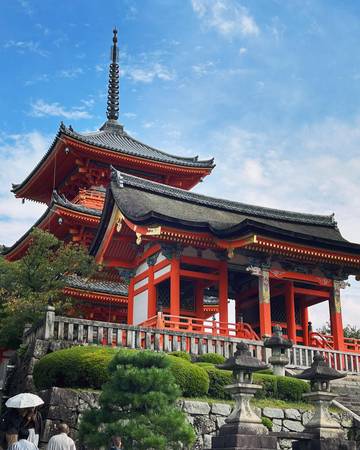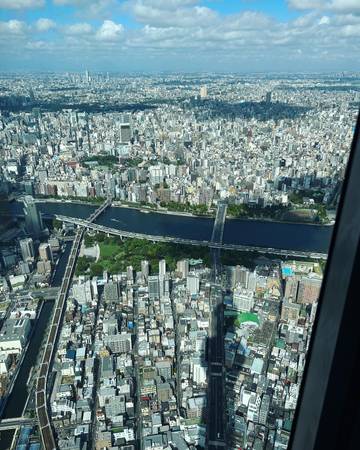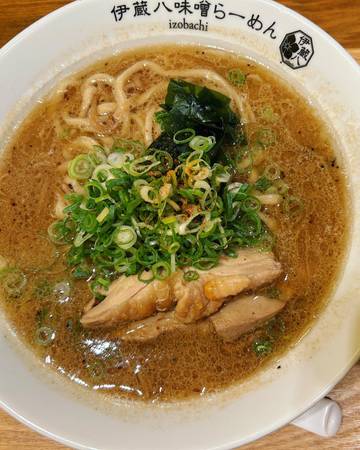submitted via AirTreks Traveler: Sue Sterling
IG: @sterlingtalk (Connect and learn more via her Instagram link)
When someone mentions Japan, what is the first thing that comes to mind? Sushi? Mt. Fuji? Geisha? While these are well-known features in the Land of the Rising Sun, there are less talked-about elements that make it a terrific, and terrifically interesting, place to visit. I spent a month there in autumn 2023, and I have some thoughts on what sets Japan apart.
First on the list is the public sanitation. I said what I said. There are clean toilets everywhere. Along the street, in department stores (almost posh), and even in subway stations. Workers can be found tidying these restrooms on a regular basis, and many include clever features like a family toilet with mini facilities for kids, and pegs on which to hang umbrellas. Japanese toilets are famous for having (in most, not all, cases) warmed seats, bidet options (front and/or back), a camouflage noise function (a mercy in public), and a drying feature. Some light up when you walk into the stall.
In contrast to the wide availability of public bathrooms, there is a noticeable lack of garbage cans. Just about the only places I saw any kind of trash bins were next to vending machines, in train stations, or in convenience stores. According to a guide I met in my first week, Japanese people are expected to handle their own trash, instead of making it the responsibility of the rest of society. This means eating in or near the store where you purchased a snack, or taking the garbage home.
The idea of “collective good” pervades Japanese culture. There are lots of rules, and most people follow them. Giving offense or causing a disturbance is consciously, scrupulously, avoided. Shoes are removed in homes, some cultural sites, and even in some restaurants. Mobile phone calls are actively discouraged inside enclosed spaces or on public transit. When a sign next to an escalator instructs users to stand still instead of walking up, by and large they do. If you are a dedicated rule-follower, you will be among your people in Japan.
Public transportation in Japan is excellent. Small land mass + 120 million people = sustainable mass transit. The high-speed trains, shinkansen, run all over the place and so frequently that people use them as a commuting option. A Japan Rail Pass is solid value, and can be used on many different trains and buses. Curiously, the pass is a paper card and has to be collected in person. This seems at odds with a modern, technologically advanced society like Japan, but there it is.
Safety was a big plus. You could leave your cell phone on a table to reserve it while you got food, and nobody would touch it. This may be because everyone in Japan is welded to their smartphone, so they have no need to take a different one.
There is no price gouging in Japan. A bottle of Pocari Sweat (a delicious electrolyte drink that I lived on) cost roughly the same whether it was purchased at the grocery store, from a vending machine, or at a transit station. More than one beautiful museum charged only about $5 to enter. Don Quijote (known as Donki) is a popular, low-price, chain that sells all manner of things: electronics, make-up, sex toys, clothing, food, and booze, as well as tea and coffee-based drinks for less than a dollar a bottle.
I fully embraced public bathing. Trips to onsen (public hot springs) were a highlight. APA, a Japanese hotel chain, has onsen in their hotels, and they were wonderful. Yes, these baths are gender-segregated and total nudity is required. Bathers clean themselves thoroughly at wash stations before bathing. Long hair must be tied up or captured in a towel, as it cannot touch the water. Kusatsu is a spa town dedicated almost entirely to visits to onsen. Popular baths will have line-ups before they open. Prices are very reasonable (approx. $7 CDN). I loved it here, although driving into the town centre is not for the faint-hearted.
I also experienced a ryokan (traditional inn) in the mountains of central Japan that had 4 pools in total, all at different temperatures. Two pools were outside with a view of the surrounding peaks. I had the place to myself and it was a moment that will stay with me forever.
Quite obviously, the food in Japan is a big draw. If you have heard that the stuff available at 7-11 is really good, I can confirm. Such a selection! Low prices, too. Whether at 7-11, Lawson Station, or Family Mart (along with a few smaller chains), I had constant access to delicious snacks, drinks, and in some stores, basic clothing. Honestly, if (when?) I go to Japan again, I may fly with next to nothing just so I can get provisions at Family Mart and one of the (brilliant, indispensable) 100-yen stores like Daiso.
Have no fear if raw fish isn’t really your thing. There is so much more to Japanese cuisine than sushi and sashimi. Izakayas (restaurants with a bar-like atmosphere) offer all kinds of tasty little nibbles like crab croquettes, incredible fried chicken, grilled shrimp, and green salads. Other culinary delights I encountered: chicken tonkatsu (get the smaller rice portion), the best ramen ever near Shibuya Station in Tokyo, and 2 different versions of okonomiyaki.
Here are some final tidbits:
- Skytree in Tokyo was worth the money and booking ahead. To be avoided if you are scared of heights.
- I spent about 6 hours at the Tokyo National Museum (with broken AC in 34C weather) and only left out of exhaustion. Fantastic collections.
- Toyota Commemorative Museum of Industry and Technology in Kyoto was an unexpected delight. The origins of the company are traced in detail. Allow at least 2 hours for a visit.
- Kyoto is the most traditionally Japanese of the big cities, and is worth at least a few days. Wandering around the Teramachi and Gion districts was fascinating.
- Yokohama was another fun spot that I kind of went to as a way station, but ended up loving. Great waterfront park.
- Pack lightly. Moving around on trains means moving your luggage a lot. Many hotels have laundry facilities.
- Kappabashi Street in Tokyo is the place for carbon steel cooking knives. Many shops offer free engraving on the blade.
- Artizon Museum (formerly Bridgestone Museum of Art) is fantastic. The building alone is worth the admission price. I loved that it featured Japanese artists next to well-known “Western” masters like Monet.




